If you have an herbaceous peony that is overcrowded or hasn’t bloomed in years, fall is a great time to dig it up, divide it, or move it. See how to divide and transplant peonies.
I have a pair of old-fashioned ‘Festiva Maxima’ peonies planted on either side of the entrance to a small fenced-in garden. One blooms happily every year but the other one hasn’t produced any blossoms for quite a while!
Each spring I scrape away some excess soil from its base thinking that it may be buried too deeply but still no flower buds are formed. Over the years a tree planted nearby has grown up enough to cast shade on it for a good part of the day. The only way to know what the problem might be is to dig it up.
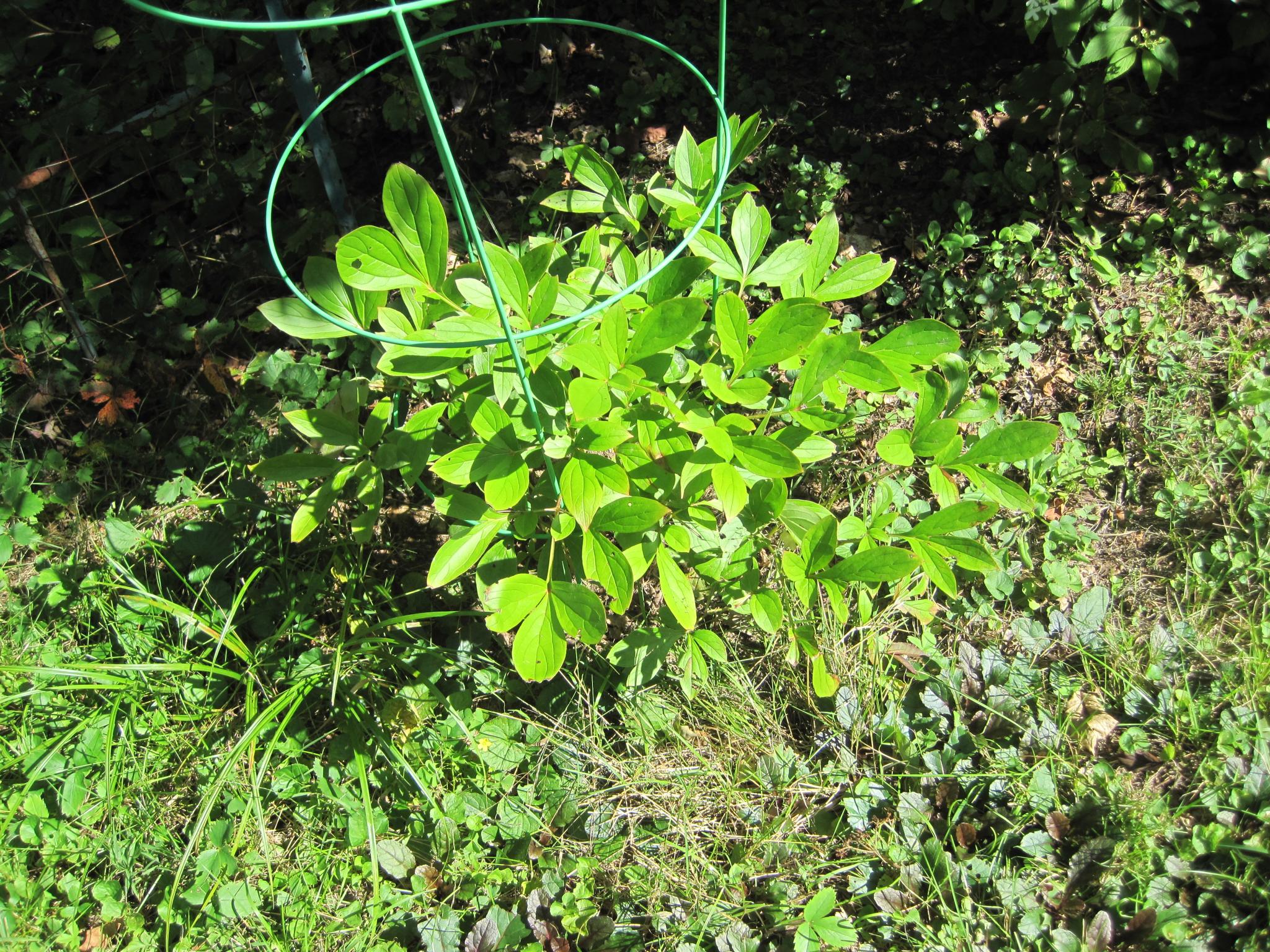
Was it too deep? Too shady? Too crowded? If only plants could talk…
It does not seem to be overcrowded and the buds were not buried too deeply so that just leaves lack of sunlight as the problem. It needs a new home.
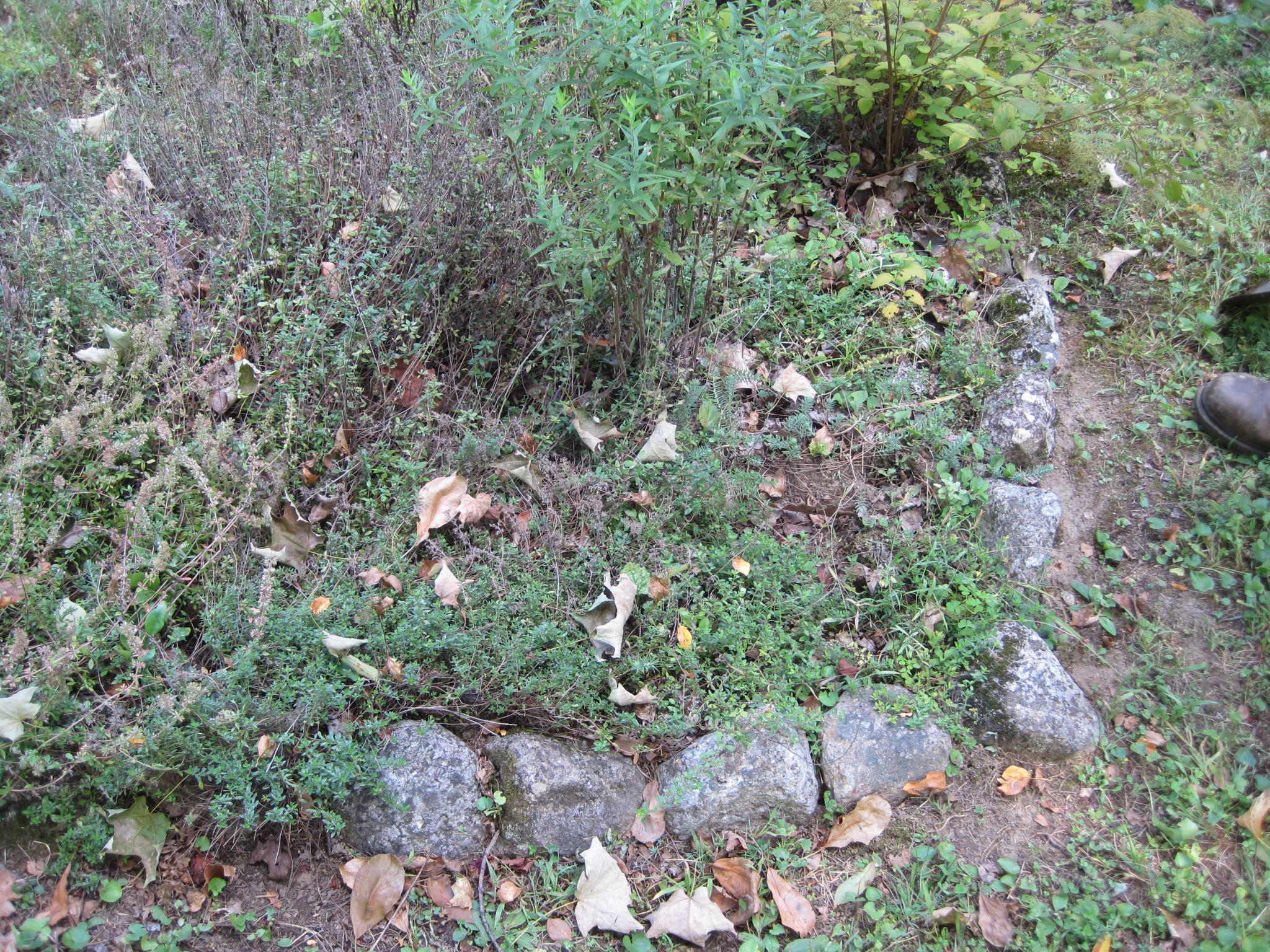
This little garden gets a lot more sun and nearby peonies perform quite well.
When to Transplant Peonies
September and the fall is the best time to transplant peonies. By then, peony plants have died down and have been able to store enough food reserves in their roots for the following year. Plus, moving a peony in early fall means that the new divisions have time to get established before winter cold.
Many folks ask if they can move the peony in the spring. Technically, you can transplant the peony in the spring just as new growth occurs, but it may not bloom well that season.
How to Transplant Peonies
We found a better place for our beloved peony where it will get direct sunshine in the morning and early afternoon and dappled sun later in the day.
 All that overgrown thyme had to go.
All that overgrown thyme had to go.
We cleared a 3x3 foot spot that had been taken over by creeping thyme, dug a 2 foot wide and deep hole, and amended the soil with compost.
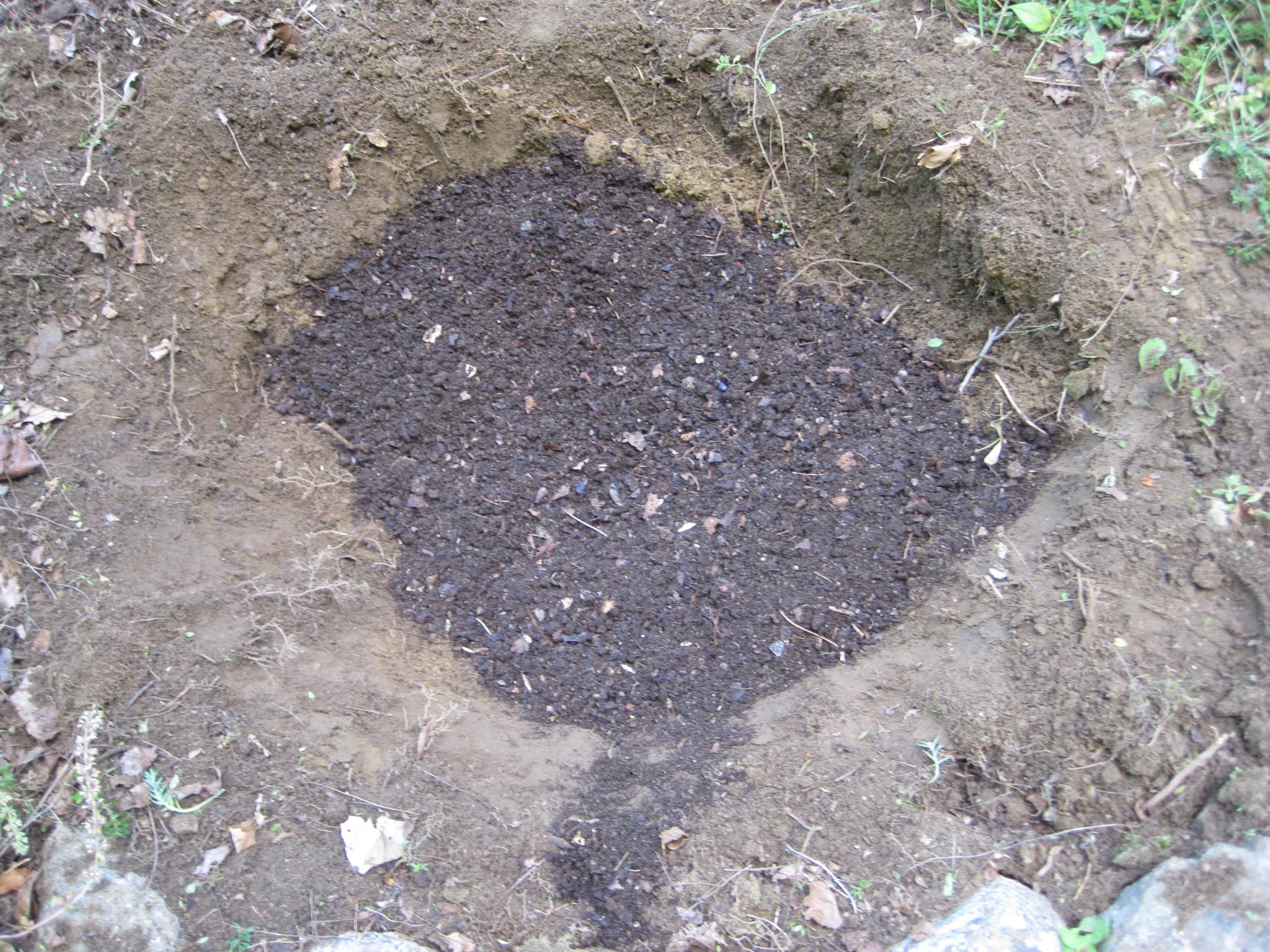
Even though the soil looked really good we took advantage of this opportunity to enrich it even more with some compost.
The roots could have been easily separated into 3 smaller plants but I kept it as one hoping it would recover and resume blossoming sooner. If you are separating your plant just make sure that each section has 3 to 5 buds or eyes on it. Peony roots are brittle so take care when digging them up and handling them.
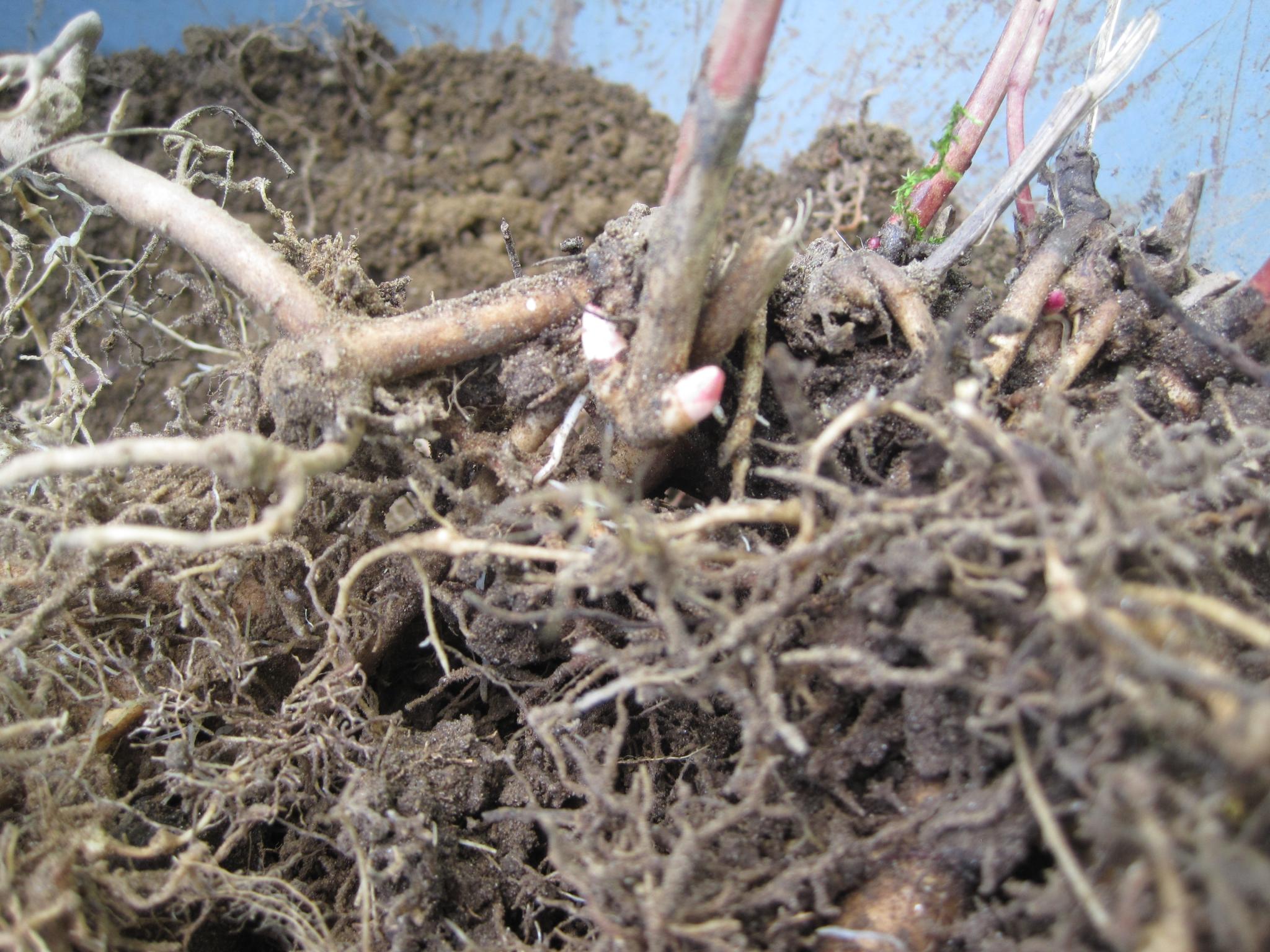
Pointy pink buds or eyes can be hard to find.
Carefully shake off the excess soil or hose it off to make locating the buds easier. Our plant had about 10 buds that we could see.
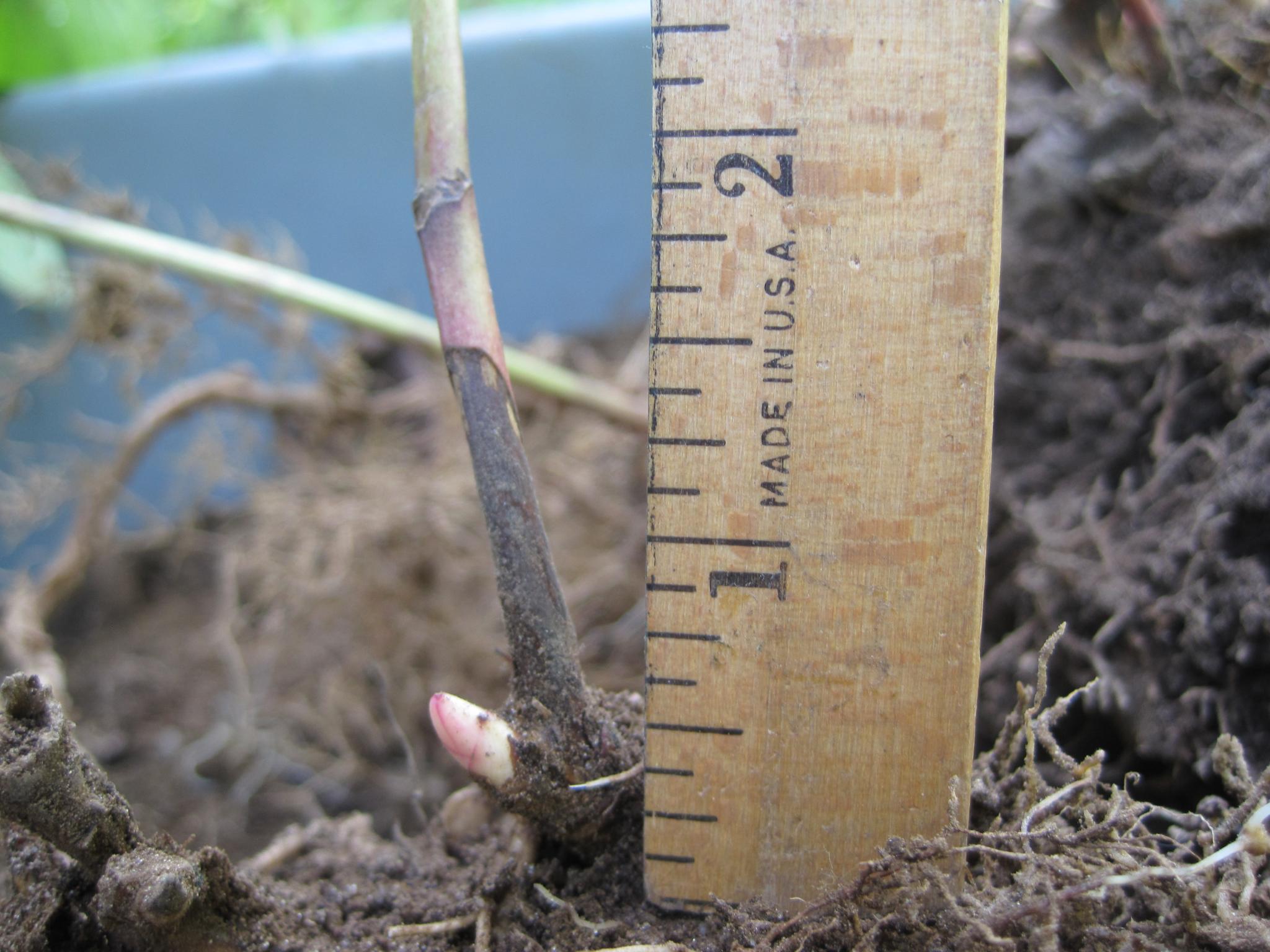
This measurement shows that our plant was buried at the proper depth before we dug it up. The dark part of the stem had been covered with soil. We replanted it at the same depth.
Place the rootball over a mound of soil in the center of the hole and make sure the base of the buds are only 1 ½-2 inches below the soil. That small a depth can be hard to determine so lay a stick across the hole and measure down from it to just under the buds to check. Once it is at the right depth, spread out the roots evenly and fill in the hole. Carefully tamp down the soil and water well to settle the roots in and eliminate any air pockets.
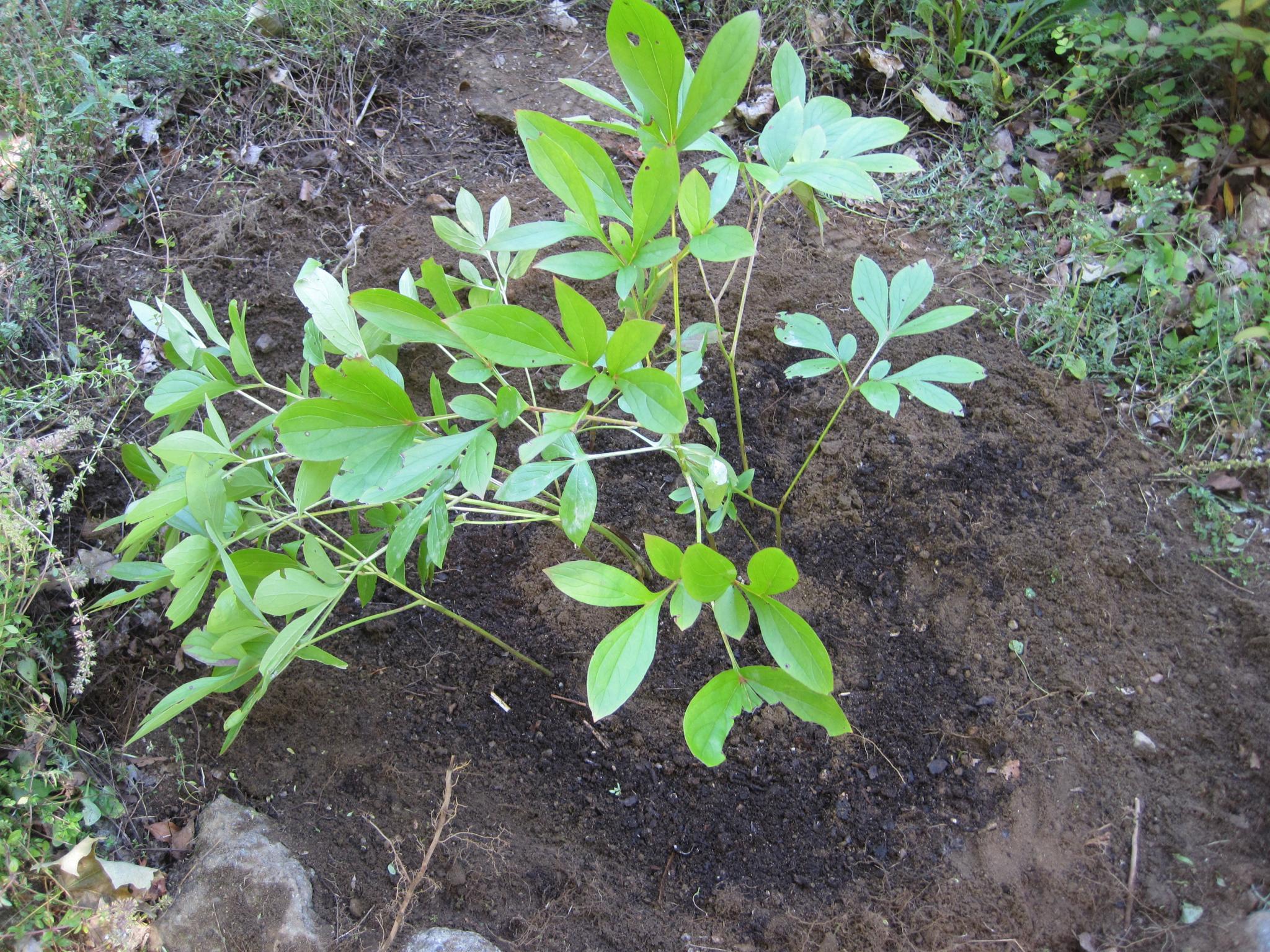
Our plant in its new home! May it live long and prosper!
Next spring remove any flower buds to encourage your plant to put its energy into root growth rather than making blossoms.

‘Festive Maxima’ is a white, double peony that dates from 1851. Its fragrance is heavenly!
It can take up to 3 years for a newly planted peony to reach its full flowering potential so I know it will take a while for mine to adjust to its new home but I am already looking forward to its fragrant flowers!
Learn more about planting, growing, and caring for peonies in the Almanac Peony Growing Guide.




 All that overgrown thyme had to go.
All that overgrown thyme had to go.












